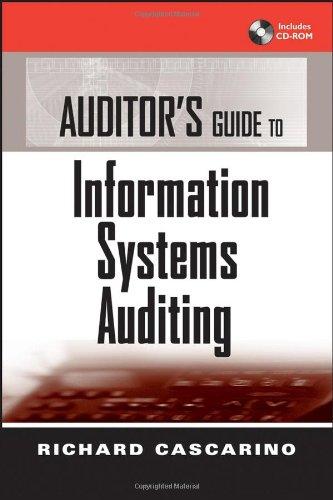Answered step by step
Verified Expert Solution
Question
1 Approved Answer
I need help with 1.2 and 1.3 Question 1.2 Yellow Food and Beverage Company expects to sell 1,000 sausages per month in 2016. The cost


I need help with 1.2 and 1.3
Question 1.2 Yellow Food and Beverage Company expects to sell 1,000 sausages per month in 2016. The cost of each sausage is $30. Annual ordering cost is $20 and annual carrying cost is $10. Yellow Food and Beverage Company operates 300 days per year. It orders sausage in lot sizes of 2,000 sausages and lead time is 7 days. Calculate the EOQ. Calculate the Reorder Point. How many times per year does May Catering Company reorder? What is the Total Annual Cost (TAC)? What extra costs does Yellow Food and Beverage Catering Company incur? Question 1.3a Trim loss optimization The cake company has 25-foot ribbons in stock for packaging. While due to the different packaging, the ribbons must be cut into the lengths necessary to meet order requirements. The company must therefore determine how to cut up the 25-foot ribbons to meet the order requirements and minimize the number of ribbons used. Length Order quantity 7 ft 700 9 ft 1200 10 ft 300 Question 1.3b Trim loss optimization When a ribbon is cut in a specific pattern, the portion of ribbon left over is referred as "trim loss". Assume if the company would like to minimize the trim loss rather than to minimize the total number of ribbons used, how does this affect the solution? Assuming you are the distribution manager of CC super Store, one of your major task is to find out the least costly way to distribute the products in different warehouses at different stores. The demand for this product at each of the market area is known, together with the transportation cost from each warehouse to each of the store. There are 3 warehouses, named Warehouse A, Warehouse B and Warehouse C. Available supply at each warehouse: Warehouse A 70 Units Warehouse B 100 Units Warehouse C 30 Units There are 3 stores, named Stores X, Store Y and Store Z. The demand of the stores are different due to their sizes and locations. Demand in each stores: Store X 70 Units Store Y 90 Units Store Z 40 Units The transportation cost from each warehouse to each market could be quite different due to geographic limitations. Unit Transportation Cost Matrix: From To Store x Store Y Store z Warehouse A $ 5 $3 $ 5 Warehouse B $ 15 $ 6 $ 10 Warehouse C $ 2 $ 11 $ 12 Try to sort out the transportation pattern with the least cost. Question 1.1b Now Suppose the truck capacity at each Warehouse could only carry 40 Units of Products to each of the stores, how will it affect your decision? Question 1.2 Yellow Food and Beverage Company expects to sell 1,000 sausages per month in 2016. The cost of each sausage is $30. Annual ordering cost is $20 and annual carrying cost is $10. Yellow Food and Beverage Company operates 300 days per year. It orders sausage in lot sizes of 2,000 sausages and lead time is 7 days. Calculate the EOQ. Calculate the Reorder Point. How many times per year does May Catering Company reorder? What is the Total Annual Cost (TAC)? What extra costs does Yellow Food and Beverage Catering Company incur? Question 1.3a Trim loss optimization The cake company has 25-foot ribbons in stock for packaging. While due to the different packaging, the ribbons must be cut into the lengths necessary to meet order requirements. The company must therefore determine how to cut up the 25-foot ribbons to meet the order requirements and minimize the number of ribbons used. Length Order quantity 7 ft 700 9 ft 1200 10 ft 300 Question 1.3b Trim loss optimization When a ribbon is cut in a specific pattern, the portion of ribbon left over is referred as "trim loss". Assume if the company would like to minimize the trim loss rather than to minimize the total number of ribbons used, how does this affect the solution? Assuming you are the distribution manager of CC super Store, one of your major task is to find out the least costly way to distribute the products in different warehouses at different stores. The demand for this product at each of the market area is known, together with the transportation cost from each warehouse to each of the store. There are 3 warehouses, named Warehouse A, Warehouse B and Warehouse C. Available supply at each warehouse: Warehouse A 70 Units Warehouse B 100 Units Warehouse C 30 Units There are 3 stores, named Stores X, Store Y and Store Z. The demand of the stores are different due to their sizes and locations. Demand in each stores: Store X 70 Units Store Y 90 Units Store Z 40 Units The transportation cost from each warehouse to each market could be quite different due to geographic limitations. Unit Transportation Cost Matrix: From To Store x Store Y Store z Warehouse A $ 5 $3 $ 5 Warehouse B $ 15 $ 6 $ 10 Warehouse C $ 2 $ 11 $ 12 Try to sort out the transportation pattern with the least cost. Question 1.1b Now Suppose the truck capacity at each Warehouse could only carry 40 Units of Products to each of the stores, how will it affect your decisionStep by Step Solution
There are 3 Steps involved in it
Step: 1

Get Instant Access to Expert-Tailored Solutions
See step-by-step solutions with expert insights and AI powered tools for academic success
Step: 2

Step: 3

Ace Your Homework with AI
Get the answers you need in no time with our AI-driven, step-by-step assistance
Get Started


